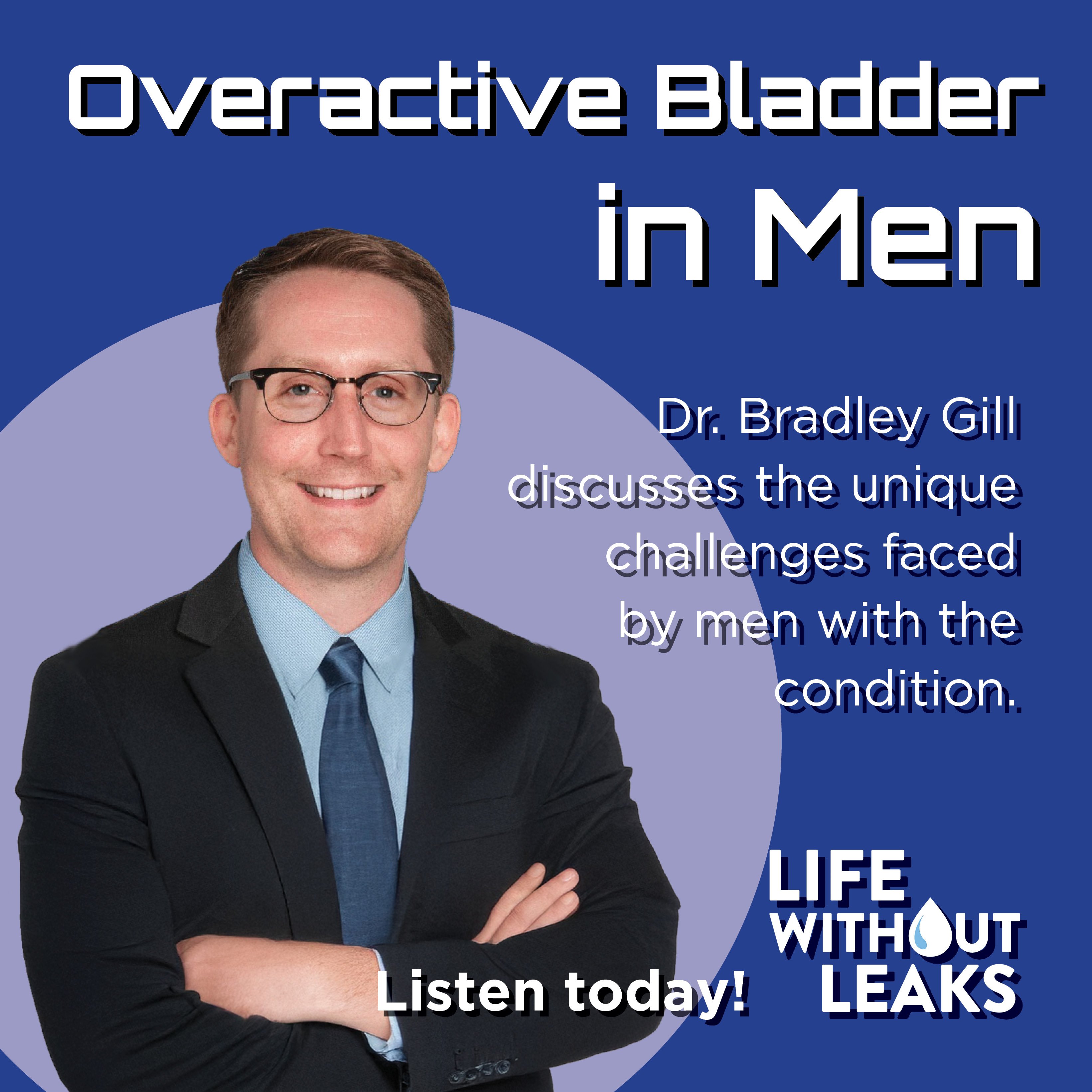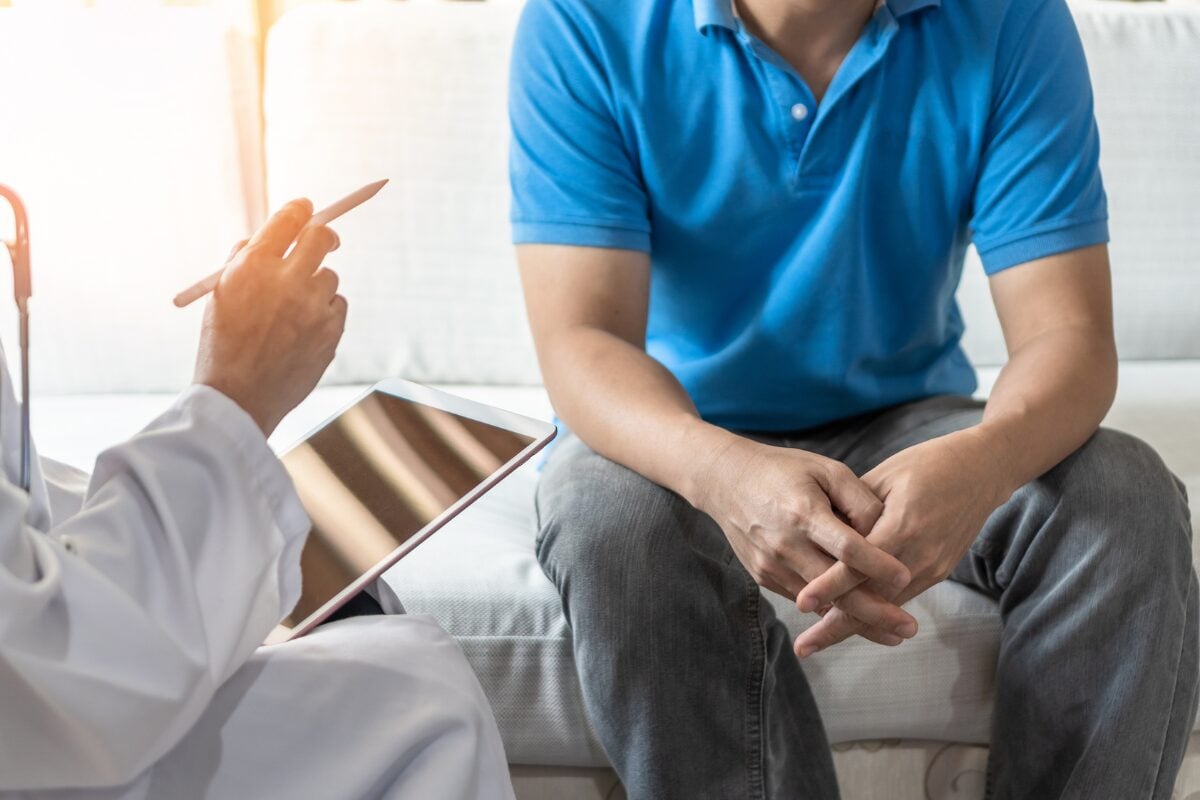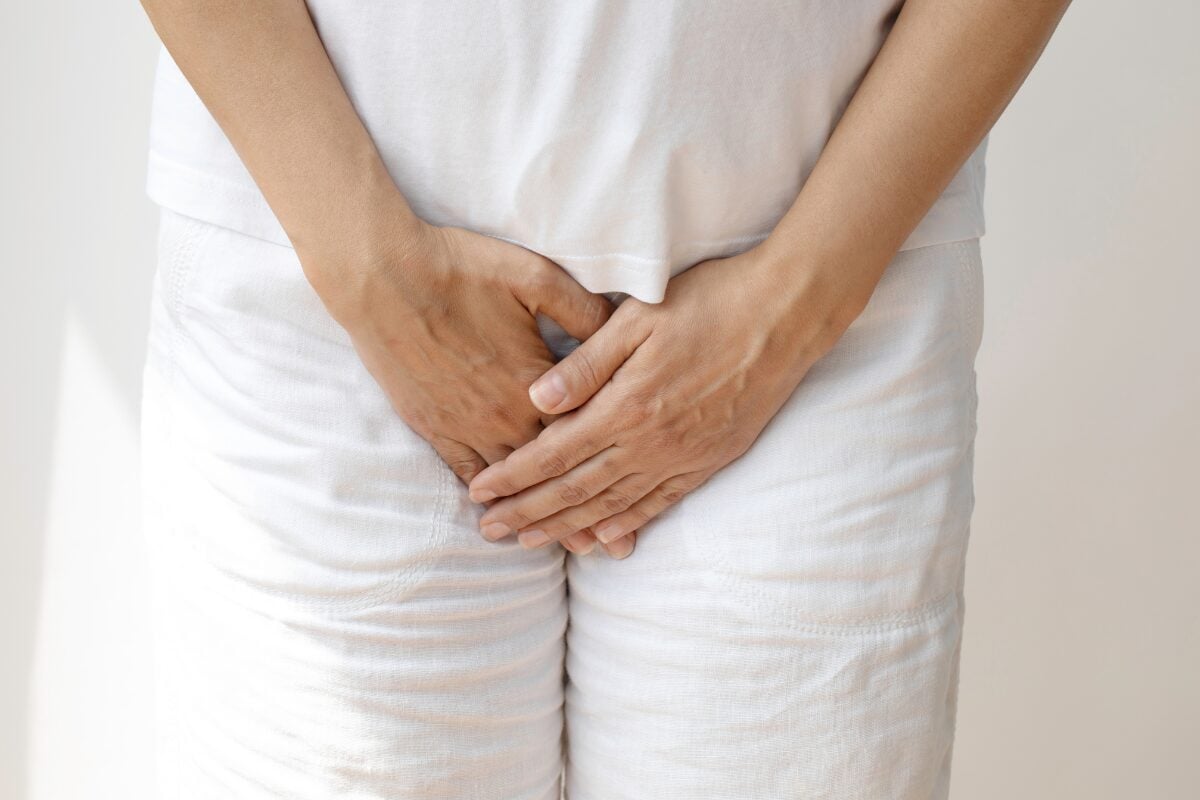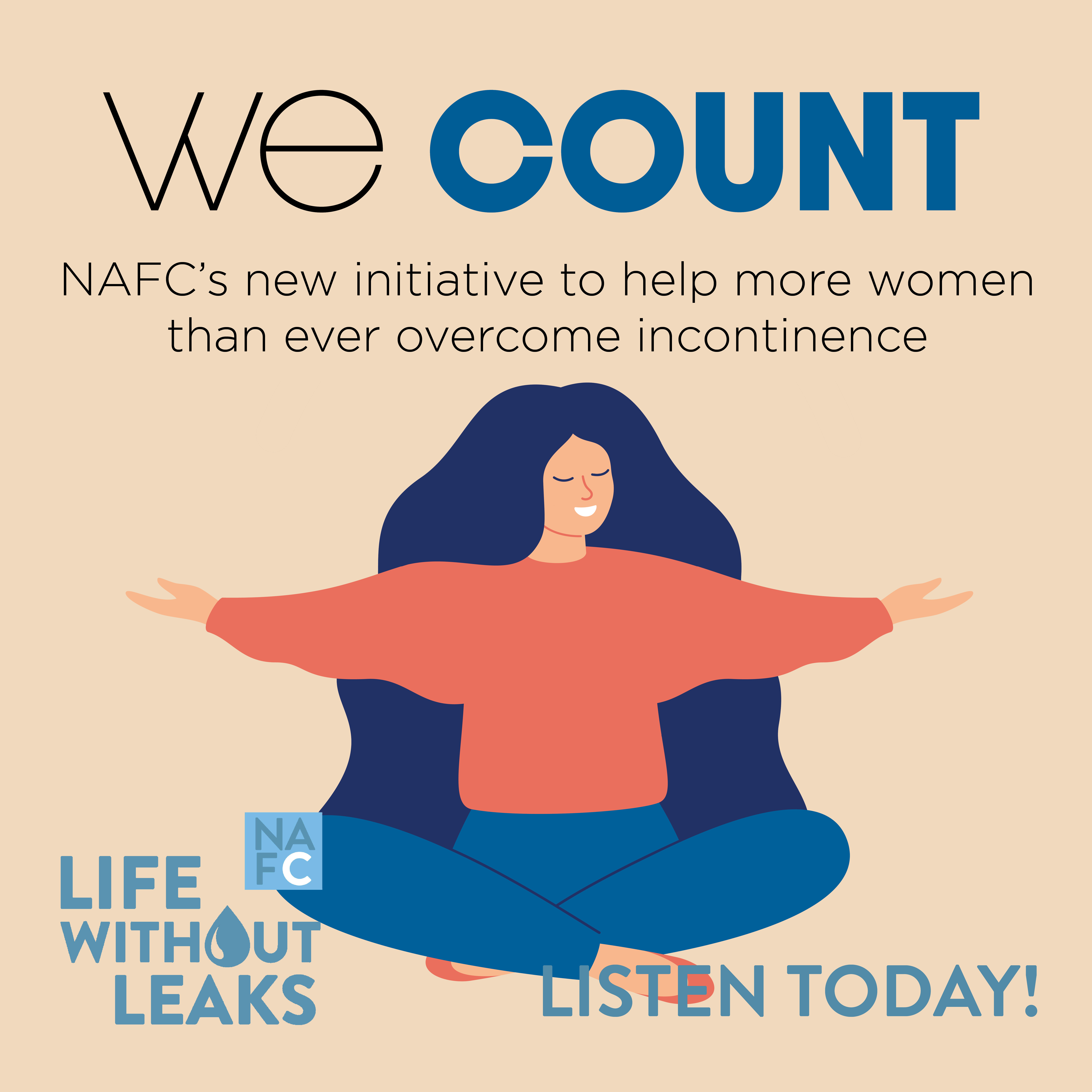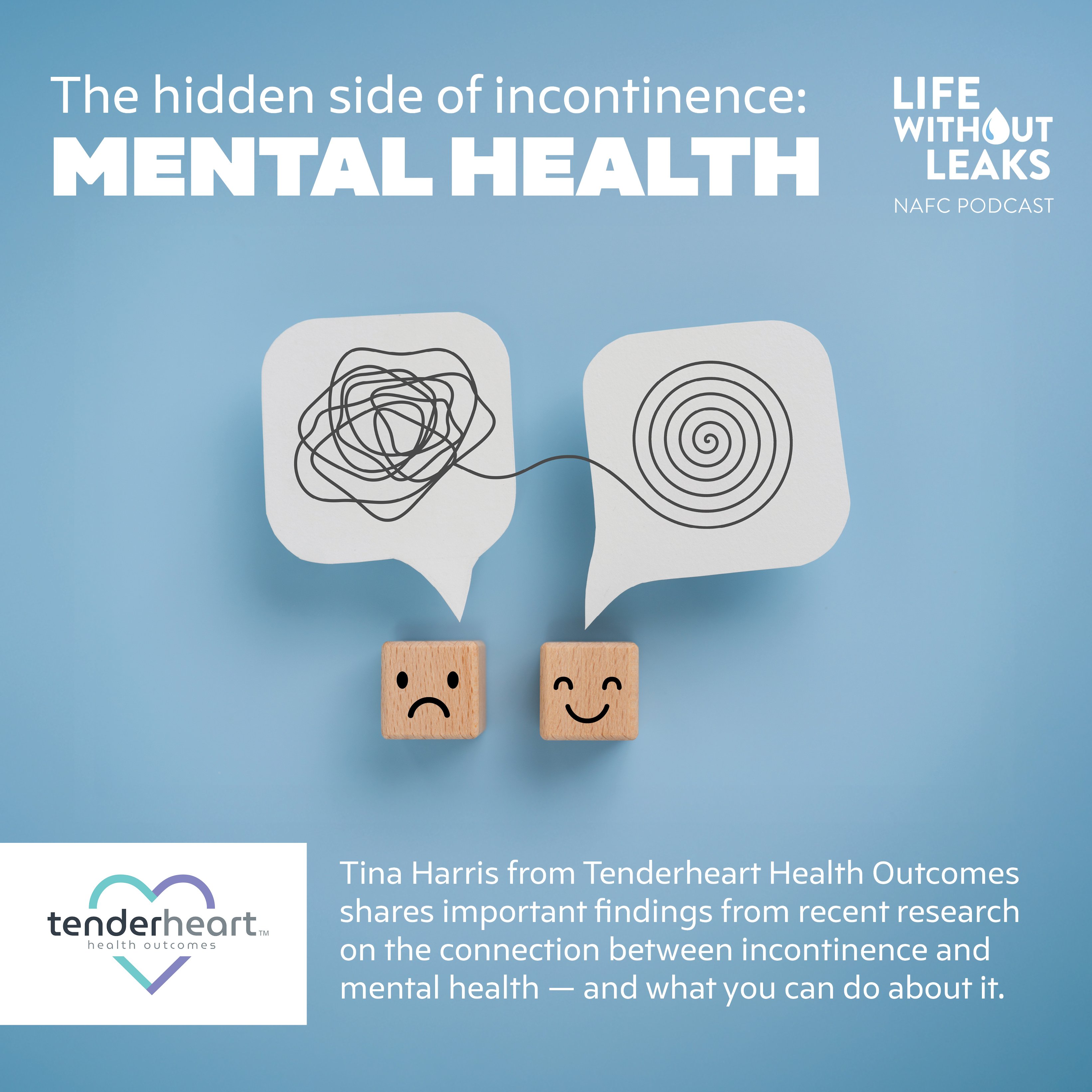
The hidden side of incontinence: Mental health challenges
When most people think about the symptoms of incontinence, they think about physical things like urgency and leaks. But what’s every bit as real – and every bit as troubling – are the mental health symptoms that so many patients live with. Incontinence is significantly associated with depression, anxiety and other mental issues, and addressing them can be a particular challenge.
Today’s guest is Tina Harris from Tenderheart Health Outcomes, here to share with us important information that the team at Tenderheart has learned about mental health from their research and patient surveys. She discusses what patients and caregivers commonly experience and offers strategies to help lighten the mental burden.



